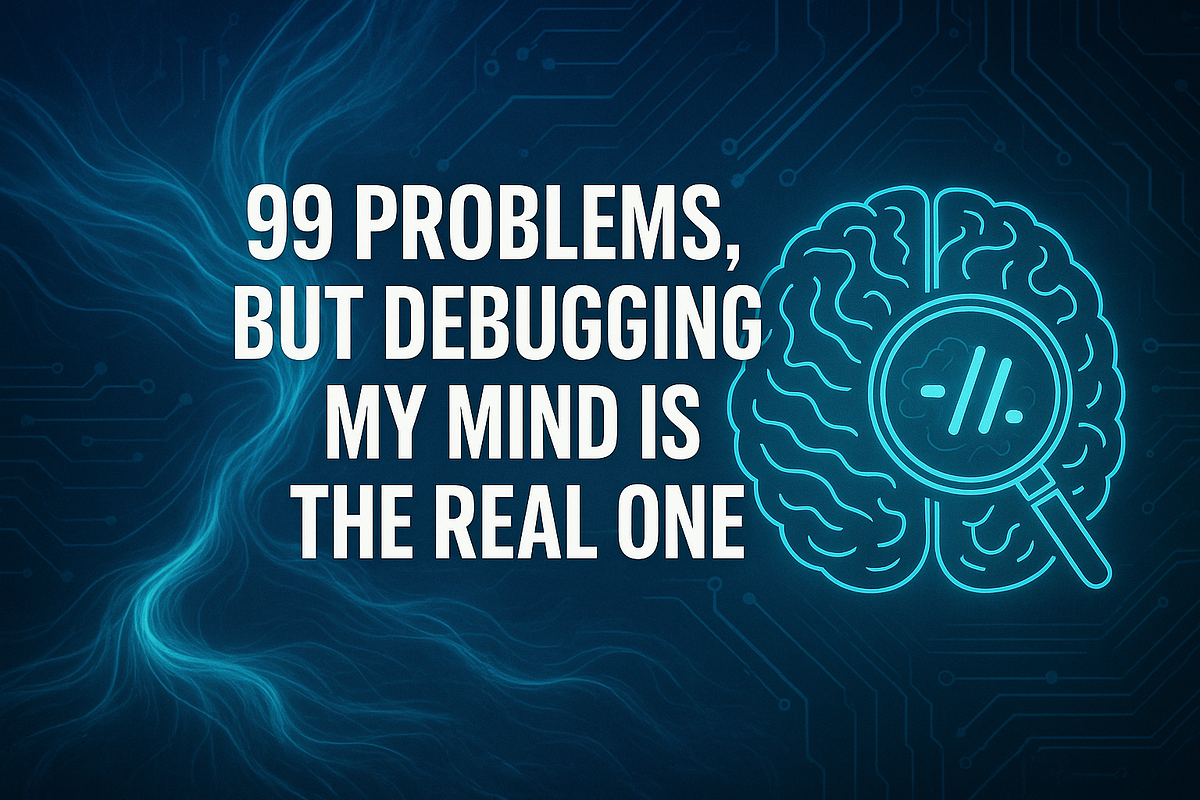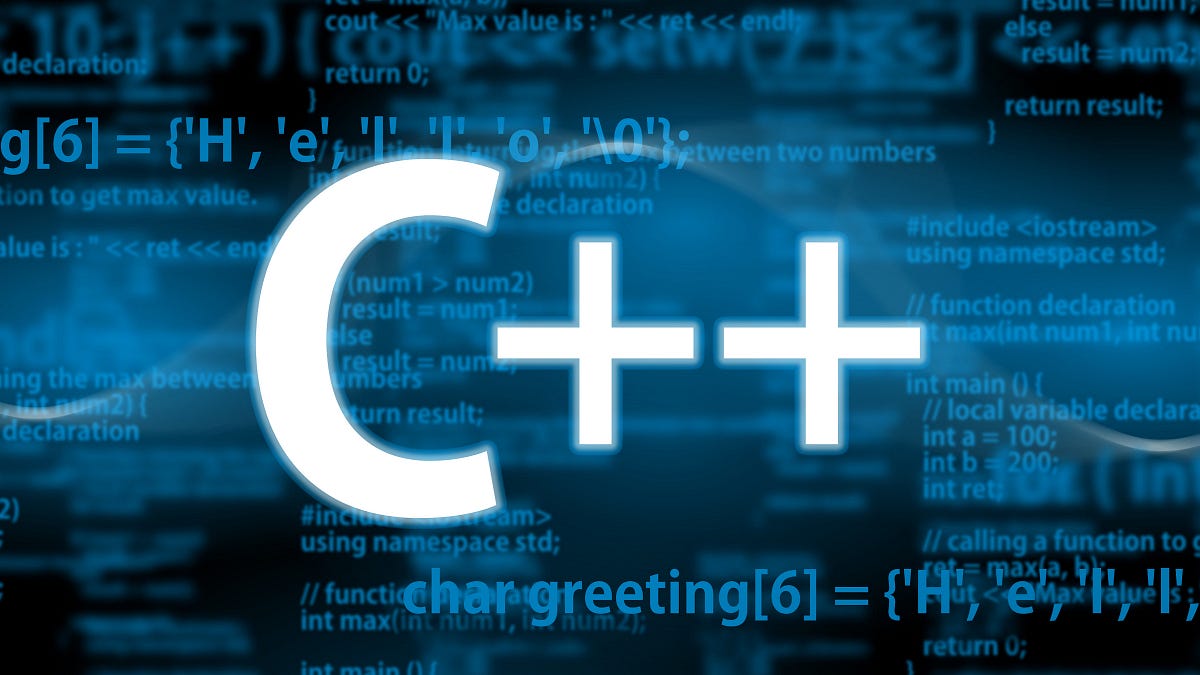Programming News
Dev
3w
176

Image Credit: Dev
🧩 Guide to Solving "Lexicographically Minimum String After Removing Stars" LeetCode 3170 (C++ | JavaScript | Python)
- Decode LeetCode problem 3170: Lexicographically Minimum String After Removing Stars in C++, JavaScript, and Python.
- Problem: Given a string with letters and asterisks, remove * by eliminating the smallest non-* character to its left to get the lexicographically smallest string.
- Approach: Use greedy decision-making by tracking the smallest character encountered, indexing characters, marking deleted characters, and building the final answer string.
- Code snippets provided for C++, JavaScript, and Python along with test cases and time/space complexity analysis.
Read Full Article
10 Likes
Dev
3w
74

Image Credit: Dev
Python Development
- Python development has a unique appeal with clean code, elegant syntax, and less debugging hassles.
- The journey with Python started smoothly, with its readability and friendliness standing out compared to other languages like Java.
- The allure of automation led to scripting tasks like renaming files, scraping flight deals, and sending motivational quotes.
- Despite challenges like debugging and learning frameworks like Django, the supportive Python community makes the journey worthwhile for developers.
Read Full Article
4 Likes
Dev
3w
48

Image Credit: Dev
Chapter 5: Final Touches & Interactive Magic
- Chapter 5: Final Touches & Interactive Magic - This chapter focuses on adding final touches to your portfolio, including integrating project images, hover effects for interactivity, button & link enhancements, smooth scrolling for anchor links, and a fade-in animation on page load.
- Step 1: Adding Project Images - Enhance project section by adding representative images to the portfolio for better visualization.
- Step 2: Hover Effects for Interactivity - Engage users visually with hover effects that provide a smooth transition and shadow effects on hover.
- Step 3: Button & Link Enhancements - Improve user interaction with actionable elements like buttons linking to external resources such as GitHub or Behance.
- Step 4: Smooth Scrolling for Anchor Links - Enhance navigation experience with smooth scrolling transitions for anchor links.
- Step 5: Adding a Fade-in Animation on Page Load - Implement a fade-in animation effect on page load using CSS for a visually appealing experience.
Read Full Article
2 Likes
Dev
3w
127

Image Credit: Dev
Why setState is delayed in React JS
- React uses a queue system to handle state updates, batching them together for a single re-render to optimize performance.
- To get the updated value immediately after setState, you can manually calculate it and use it where needed.
- State doesn’t update immediately after setState but on the next render to minimize unnecessary renders.
- Understanding why setState in React may feel delayed can help in writing more efficient and predictable code.
Read Full Article
7 Likes
Discover more
- Software News
- Web Design
- Devops News
- Open Source News
- Databases
- Cloud News
- Product Management News
- Operating Systems News
- Agile Methodology News
- Computer Engineering
- Startup News
- Cryptocurrency News
- Technology News
- Blockchain News
- Data Science News
- AR News
- Apple News
- Cyber Security News
- Leadership News
- Gaming News
- Automobiles News
Medium
3w
246

Cracking the Code: My Journey to Software Engineering Success
- The Gauntlet AI challenge offers a blend of technical complexity and real-world application, pushing individuals to think innovatively and elevate their skills to the next level.
- Preparation involves delving into AI algorithms, machine learning models, and data structures to anticipate challenges and have a solid strategy in place before the challenge in Austin.
- Completing the Gauntlet AI challenge not only signifies personal achievement but also marks a step towards a rewarding career in software engineering, providing valuable experience in problem-solving and innovation.
- Looking ahead to the challenge in Austin, there is a mix of excitement and determination, as it represents a journey towards mastery, innovation, and making a meaningful impact in the field of software engineering.
Read Full Article
14 Likes
Medium
3w
361

Image Credit: Medium
99 Problems, But Debugging My Mind Is the Real One
- A story about a coder who excelled in coding but struggled with mental health issues.
- Highlighting the importance of prioritizing mental well-being over professional achievements.
- Emphasizing the need to address mental health struggles in the tech industry.
- Encouraging individuals to focus on joy and inner healing alongside their professional success.
Read Full Article
21 Likes
Dev
3w
369

Image Credit: Dev
9 Tools That Turn Junior Devs into Senior Engineers
- Tools can help junior developers accelerate their journey to becoming senior engineers by providing efficiency and automation in various tasks.
- Key tools like Git & GitHub, Postman, Docker, and VS Code are essential for collaboration, API testing, containerization, and code editing.
- Embracing AI copilots, documentation tools like Obsidian, testing libraries, error monitoring tools like Sentry, and visual thinking platforms can further enhance skillsets.
- The mindset of understanding why and how to use tools is crucial in transitioning from a junior to a senior developer.
- Utilizing tools with intent and adopting best practices can set junior developers on a path to acquiring senior-level proficiency within a shorter timeframe.
- Following a structured roadmap to implement and master these tools can be beneficial for junior developers looking to level up their skills.
Read Full Article
22 Likes
Medium
3w
431

Image Credit: Medium
They Know Java, But Not Joy
- A story highlighting the struggles of a person who is proficient in Java concepts and coding skills but lacks emotional understanding and inner peace.
- Emphasizes on the importance of mental well-being and self-reflection in addition to technical skills and certifications.
- Encourages individuals to prioritize happiness and self-care alongside professional achievements.
- The message conveys the significance of being human first, valuing inner joy, self-love, and peace in the journey of personal and professional growth.
Read Full Article
25 Likes
Dev
3w
198

Image Credit: Dev
💡Creative Problem Solving
- Creative Problem Solving is vital for innovation, going beyond existing data-driven solutions to generate novel ideas and improve progress.
- It is crucial for QA Engineers to creatively break and enhance systems by designing 'evil' test cases, devising efficient automation, exploring edge cases, and proposing solutions.
- This skill is applied across various IT roles like Software Developers tackling performance issues, Penetration Testers finding security flaws creatively, UX Designers solving complex workflows, and DevOps Engineers optimizing deployment strategies.
- Schools can teach Creative Problem Solving by promoting brainstorming, using open-ended prompts, fostering design thinking, and valuing different disciplines to nurture creativity in students.
Read Full Article
11 Likes
Medium
3w
286

WordPress Security in 2025: Protect, Fix, and Improve Your Website
- A hacked WordPress website can lead to loss of customer trust, declined search engine rankings, downtime, data loss, and damage to brand reputation.
- To enhance security, update WordPress core, themes, and plugins promptly after releases and delete unused plugins and themes.
- Protect against weak passwords by using a password manager and enable 2FA through plugins like “Two Factor Authentication” or “Google Authenticator.”
- Implement security measures like changing the default login URL, using security plugins, forcing HTTPS, scheduling automatic backups, adjusting file permissions, and disabling XML-RPC when not in use.
Read Full Article
17 Likes
Dev
3w
26

Image Credit: Dev
Perplexity Labs vs ChatGPT - Which Is Better in 2025?
- Perplexity Labs introduced by Perplexity enhances projects with advanced tools for creating files, presentations, and interactive elements.
- Perplexity Labs caters to Pro subscribers for automating tasks and complex project creation since its launch in 2025.
- ChatGPT in 2025, known for its versatility, introduced advanced models like GPT-4.1 and features for deep research connectors.
- Perplexity Labs focuses on accurate research and project creation, while ChatGPT excels in conversational tasks and creative content generation.
- Perplexity Labs offers user accessibility through Pro subscriptions, while ChatGPT operates on a freemium model with paid plans for advanced features.
- Perplexity Labs is suitable for business research, project management, and web development, meanwhile ChatGPT is ideal for content creation, education, and customer support.
- Strengths of Perplexity Labs include automation of project creation and specialized tools for finance, with weaknesses being advanced features behind a paywall.
- Strengths of ChatGPT lie in its versatility and continuous updates with advanced models, with potential weaknesses in providing citations and requiring more user input for projects.
- Perplexity Labs and ChatGPT cater to different needs – structured reliability versus flexibility – with both evolving to serve diverse AI interactions.
- For more advanced coding solutions, Bind AI IDE based on Claude 4 is recommended, allowing customization and deployment of front-end and back-end applications.
Read Full Article
1 Like
Medium
3w
193

Image Credit: Medium
Writing a Web Server in C++
- Developed a web server in C++ without relying heavily on ChatGPT, focusing on manual coding as much as possible.
- Implemented basic functionality to allow sending a request and receiving a 'Hello World' response with a hardcoded 200 OK status.
- Learned and reviewed socket programming by binding a socket to an IP address and port, drawing parallels to setting up pipes in Operating Systems.
- Utilized accept4() over accept() in socket programming, marked SO_REUSEADDR to ease server restarts, and incorporated colored terminal text for debugging purposes.
Read Full Article
11 Likes
Dev
3w
202

Image Credit: Dev
🚀 Roadmap to Becoming a Full Stack Developer in 2025
- The demand for Full Stack Developers is high in 2025 due to the evolving tech landscape with AI tools, new frameworks, and modern architectures.
- Roadmap to become a Full Stack Developer in 2025 includes mastering basics of web development, front-end frameworks, backend development, databases, DevOps, AI tools, architecture & system design, security, building real projects, and staying updated.
- Key areas to focus on include HTML, CSS, JavaScript, React/Next.js for frontend, Node.js + Express.js for backend, SQL + NoSQL databases, DevOps practices, AI tools integration, system design, security best practices, real project building, and continuous learning.
- Conclusion emphasizes mastering core tech stack, adapting to AI & automation, building real projects, understanding modern architecture, and staying adaptable for success as a Full Stack Developer in 2025.
Read Full Article
12 Likes
Dev
3w
0

Image Credit: Dev
I built a File Sharing App in Python (with Auto Discovery + Drag & Drop). Here is what I learned.
- The article discusses the author's experience in building a Python file-sharing app over local networks.
- The app features a graphical interface using Tkinter, with separate tabs for sender and receiver functionalities.
- Sender side includes auto-discovery of hosts, drag and drop support, port selection, and file integrity check.
- Receiver side allows choosing listening ports, selecting save folders, and start/stop receiving options.
- The project utilizes Python libraries like socket, threading, tkinterdnd2, with no external dependencies.
- The author built the app to overcome perfectionism, learn practical networking concepts, and avoid overthinking.
- Challenges encountered included broadcasting issues with VMs, real-world experimentation, and utilizing GitHub Copilot.
- Lessons learned include the importance of modularity in code structure, debugging, and breaking projects into modules.
- The GitHub repository 'File-Share' contains the full code for the peer-to-peer file-sharing app with various features.
- The project summary showcases the app's capabilities like one-to-one file transfers, host discovery, drag & drop, and integrity checks.
- The article encourages sharing work without fear, highlighting the joy of learning, progress, and celebrating small victories.
Read Full Article
Like
Self-Learning-Java
3w
198

BigQuery Partitioned Tables: Boost Query Performance & Cut Costs
- Partitioned tables in BigQuery help improve query performance, reduce scanning costs, and enable parallel processing.
- A partitioned table divides data into smaller segments based on a column value, optimizing performance by scanning only relevant partitions.
- Advantages include faster query performance, reduced scanning leading to lower costs, and increased parallelism for faster execution.
- Partitioning can be done based on the ingestion time, date/timestamp column, or integer column, depending on the nature of the data.
Read Full Article
11 Likes
For uninterrupted reading, download the app